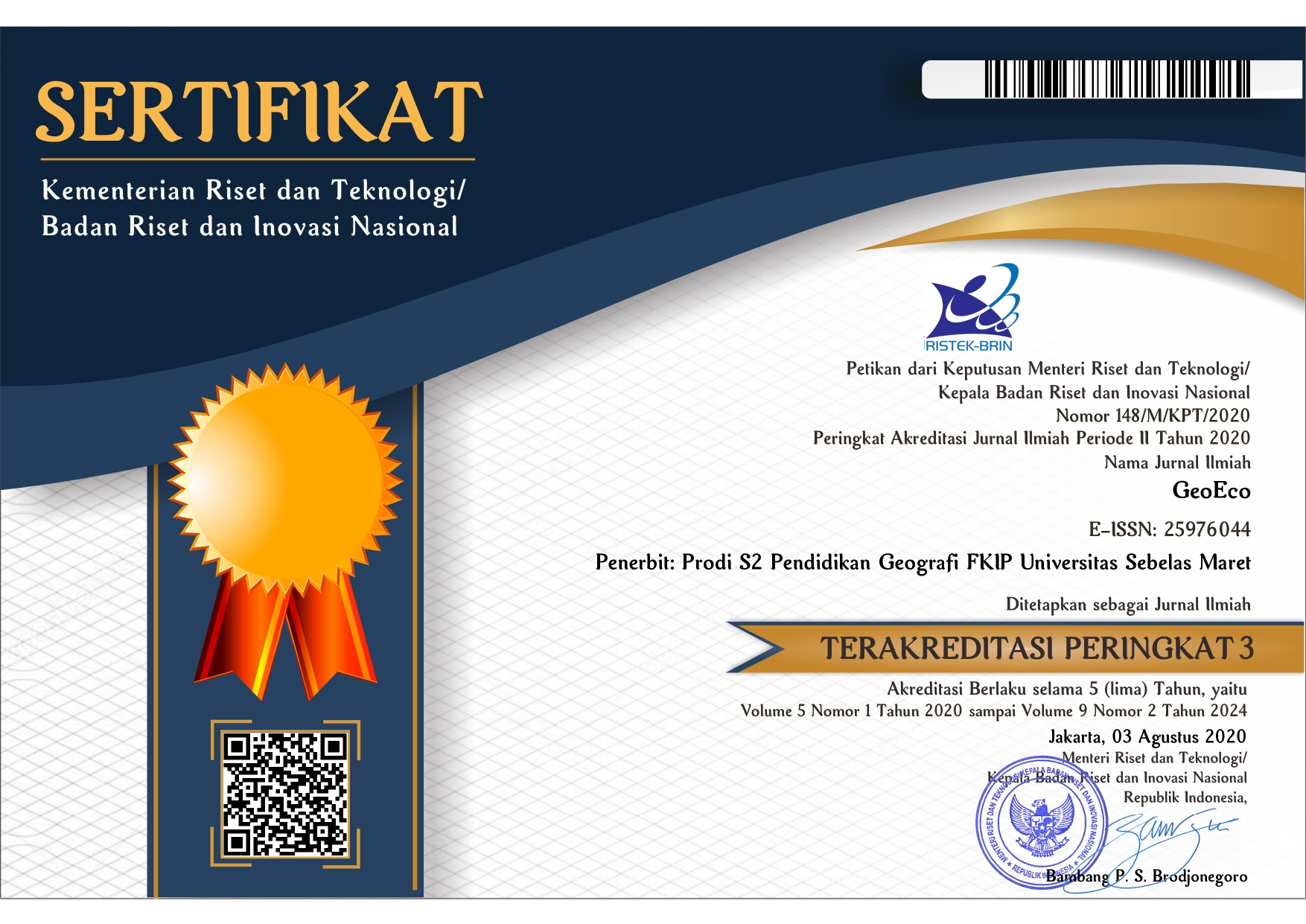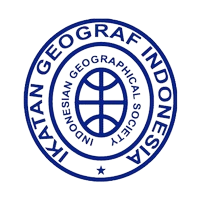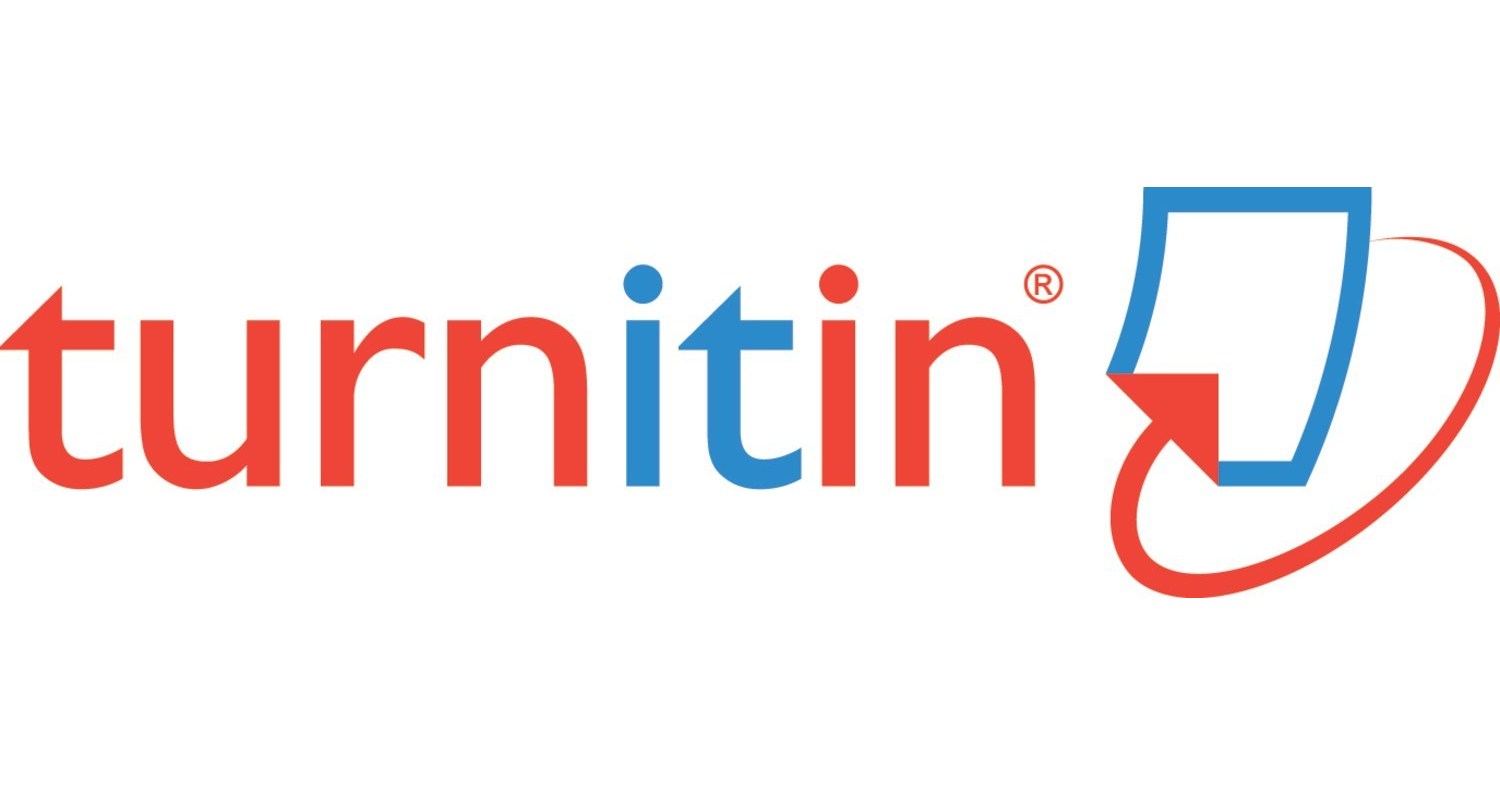A FRAMEWORK FOR SIMULATIONS AND GAMES BASED ON INDIGENOUS KNOWLEDGE AND FOLKLORE TO CREATE DISASTER AWARENESS: COMPARING FROM INDONESIA AND IMPLEMENTING IT IN JAPAN
Abstract
Indigenous disaster knowledge and folklore play a crucial role in fostering disaster awareness, yet traditional practices are increasingly being neglected in modern society. Simulation and Gaming (S&G) offers a promising solution to these challenges, particularly in raising unconscious understanding of evacuation procedures during earthquakes and tsunamis, especially for those in vulnerable regions. Despite its potential, no scientific research has yet applied this method in Japan. This study analyses the S&G approach used in Indonesia, inspired by the Smong folklore, which aims to increase awareness of tsunami risks. Building on this, the research proposes a framework for an S&G tailored to Japan, incorporating Namazu folklore and the ancient wisdom of tsunami tendenko. The framework was developed through interviews with key informants, including a game maker from Indonesia, a scholar, and a museum manager in Japan. The initial phase of the framework was created to develop a board game for raising disaster awareness among residence along the Tohoku coastline area. The integration of local folklore which is deeply rooted in local culture and making it more relatable and engaging for community members, offers its effectiveness in enhancing community resilience to tsunamis. The study concludes that this innovative approach will not only work in Japan but could also be adapted by other disaster-prone regions worldwide, offering a versatile tool for improving disaster preparedness and safeguarding vulnerable communities.
Keywords
Full Text:
PDFReferences
Basher, R., & Ono, Y. (2022). Memorialization Tools for Systematically Expanding Disaster Risk Reduction Across Space and Time. J. Disaster Res., 17(4). https://doi.org/10.20965/jdr.2022.p0526
Baumwoll, J., & Baumwoll, J. (2008). T HE V ALUE OF I NDIGENOUS K NOWLEDGE FOR D ISASTER R ISK R EDUCTION : A Unique Assessment Tool for by.
Coughlan, M. (2016). Interviewing in qualitative research. June 2009. https://doi.org/10.12968/ijtr.2009.16.6.42433
Dekens, J. (2014). Local Knowledge for Disaster Preparedness : A Literature Review. January 2007.
Fulco, F. (2017). Japan-Insights Kataribe : A Keyword to Recovery Japan-Insights. February.
Gadeng, A. N., Maryani, E., & Rohmat, D. (2018). The Value of Local Wisdom Smong in Tsunami Disaster Mitigation in Simeulue Regency, Aceh Province. IOP Conference Series: Earth and Environmental Science, 145(1). https://doi.org/10.1088/1755-1315/145/1/012041
Gerster, J., & Maly, E. (2022). Japan’s Disaster Memorial Museums and framing 3.11: Othering the Fukushima Daiichi nuclear disaster in cultural memory. Contemporary Japan, 34(2), 187–209. https://doi.org/10.1080/18692729.2022.2112479
Hannis, R., Maroof, H., Shida, O., & Irin, C. (2019). THE POTENTIALS OF DARK TOURISM IN BANDA ACEH, INDONESIA. 4 Th International Conference on Rebuilding Place.
Hashima, A., & Sato, T. (2017). A megathrust earthquake cycle model for Northeast Japan : bridging the mismatch between geological uplift and geodetic subsidence. Earth, Planets and Space, 1–10. https://doi.org/10.1186/s40623-017-0606-6
Katada, T., & Kanai, M. (2016). The School Education to Improve the Disaster Response Capacity : A Case of “ Kamaishi Miracle .” J. Disaster Res., 11(5), 845–856. https://doi.org/https://doi.org/10.20965/jdr.2016.p0845 The
Kelman, I., Spence, R., Palmer, J., Petal, M., & Saito, K. (2008). Tourists and disasters: Lessons from the 26 December 2004 tsunamis. Journal of Coastal Conservation, 12(3), 105–113. https://doi.org/10.1007/s11852-008-0029-4
Klabbers, J. H. (2018). On the Architecture of Game Science. Simulation & Gaming, 49(3), 207–245. https://doi.org/10.1177/1046878118762534
Klabbers, J. H. G. (2009). The Magic Circle: Principles of Gaming & Simulation. BRILL. https://doi.org/10.1163/9789087903107
Klabbers, J. H. G. (2019). The Magic Circle: Principles of Gaming & Simulation. The Magic Circle: Principles of Gaming & Simulation, January 2006. https://doi.org/10.1163/9789087903107
Kodama, S. (2015). Tsunami-tendenko and morality in disasters. J. Med. Ethics, 41(5), 361–363. https://doi.org/10.1136/medethics-2012-100813
Kongko, W., Karima, S., Tiwi, D. A., & Sudiana, N. (2018). Description of the 1907 Aceh tsunami : impact ( height , inundation and the travel time ) on Cities of Banda Aceh , Meulaboh and Gunung Sitoli , Indonesia Description of the 1907 Aceh tsunami : impact ( height , inundation and the travel time ) on Cities . https://doi.org/10.1088/1742-6596/2498/1/012021
Lin, Y., Kelemen, M., & Tresidder, R. (2018). Post-disaster tourism: building resilience through community-led approaches in the aftermath of the 2011 disasters in Japan. Journal of Sustainable Tourism, 26(10), 1766–1783. https://doi.org/10.1080/09669582.2018.1511720
Martini, A., & Buda, D. M. (2019). Analysing affects and emotions in tourist e-mail interviews: a case in post-disaster Tohoku, Japan. Current Issues in Tourism, 22(19), 2353–2364. https://doi.org/10.1080/13683500.2018.1511693
Mayer, I. S. (2009). The Gaming of Policy and the Politics of Gaming: A Review. Simulation and Gaming, 40(November 2009), 825–862. https://doi.org/10.1177/1046878109346456
Mcadoo, B. G., Dengler, L., Eeri, M., & Prasetya, G. (2006). Smong : How an Oral History Saved Thousands on Indonesia ’ s Simeulue Island Smong : How an Oral History Saved Thousands on Indonesia ’ s Simeulue Island during the December 2004 and March 2005 Tsunamis. March 2005. https://doi.org/10.1193/1.2204966
Noburu, M., & Mamoru, T. (1995). Namazu e: Shinsai to Nihon bunka.
Oe, H., & Kawakami, S. (2021). A disaster prevention programme using virtual schemes: Recommendation of tradition populaire integrated with tendenko as an approach to immersive training. International Journal of Disaster Risk Reduction, 57(November 2020), 102135. https://doi.org/10.1016/j.ijdrr.2021.102135
Oliver-Smith, A. (1996). Anthropological Research on Hazards and Disasters. Anthropological Research on Hazards and Disasters, 25(December), 303–328. https://doi.org/10.1146/annurev.anthro.25.1.303
Rabinovich, A. B., & Eblé, M. C. (2015). Deep-Ocean Measurements of Tsunami Waves. Pure and Applied Geophysics, 172(12), 3281–3312. https://doi.org/10.1007/s00024-015-1058-1
Sakurai, A., & Munadi, K. (2018). International Journal of Disaster Risk Reduction The analysis of the development of the Smong story on the 1907 and 2004 Indian Ocean tsunamis in strengthening the Simeulue island community ’ s resilience. 29(August 2017), 13–23. https://doi.org/10.1016/j.ijdrr.2017.07.015
Smits, G. (2012). Conduits of Power : What the Origins of Japan ’ s Earthquake Catfish Reveal about Religious Geography Author ( s ): Gregory Smits Published by : International Research Centre for Japanese Studies , National Institute for the Humanities Stable URL : http:/. 24(24), 41–65.
Sudarmilah, E., & Surakarta, U. M. (2022). Game Edukasi Mitigasi Bencana Gempa Bumi Berbasis Android. January 2020. https://doi.org/10.37802/joti.v1i1.11
Syafwina. (2014). Recognizing Indigenous Knowledge for Disaster Management : Smong , Early Warning System from Simeulue Island , Aceh. Procedia Environmental Sciences, 20, 573–582. https://doi.org/10.1016/j.proenv.2014.03.070
Takabatake, T., Shibayama, T., Esteban, M., Ishii, H., & Hamano, G. (2017). International Journal of Disaster Risk Reduction Simulated tsunami evacuation behavior of local residents and visitors in. International Journal of Disaster Risk Reduction, 23(April), 1–14. https://doi.org/10.1016/j.ijdrr.2017.04.003
Tanaka, S. (2023). The 2011 Great East Japan Earthquake and Tsunami: The highest casualties and largest reconstruction funds—Characteristics of major disasters and future challenges in developed countries. Japanese Journal of Sociology, 32(1), 7–24. https://doi.org/10.1111/ijjs.12147
Toyoda, Y. (2020). A Framework of Simulation and Gaming for Enhancing Community Resilience Against Large-Scale Earthquakes: Application for Achievements in Japan. Simulation and Gaming, 51(2), 180–211. https://doi.org/10.1177/1046878119899424
Ulya, S., & Akbar, Z. (2023). SIGANA Banjir : Game Edukasi Kesiapsiagaan Bencana Banjir Untuk Anak Usia 5-6 Tahun. 4(2), 151–164. https://doi.org/10.37985/murhum.v4i2.311
UNDRR. (2015). Sendai Framework for Disaster Risk Reduction 2015 - 2030.
Refbacks
- There are currently no refbacks.












.png)

